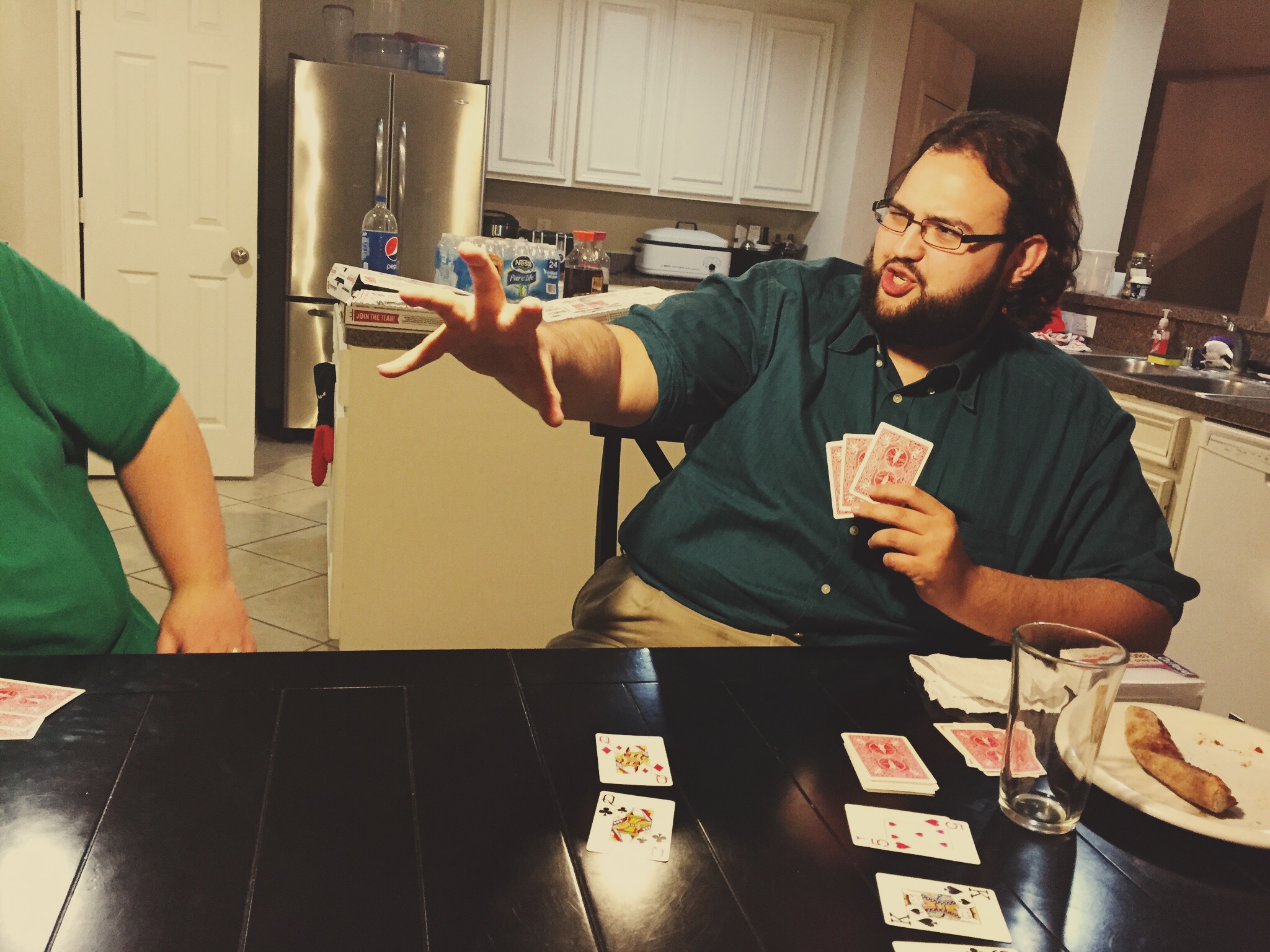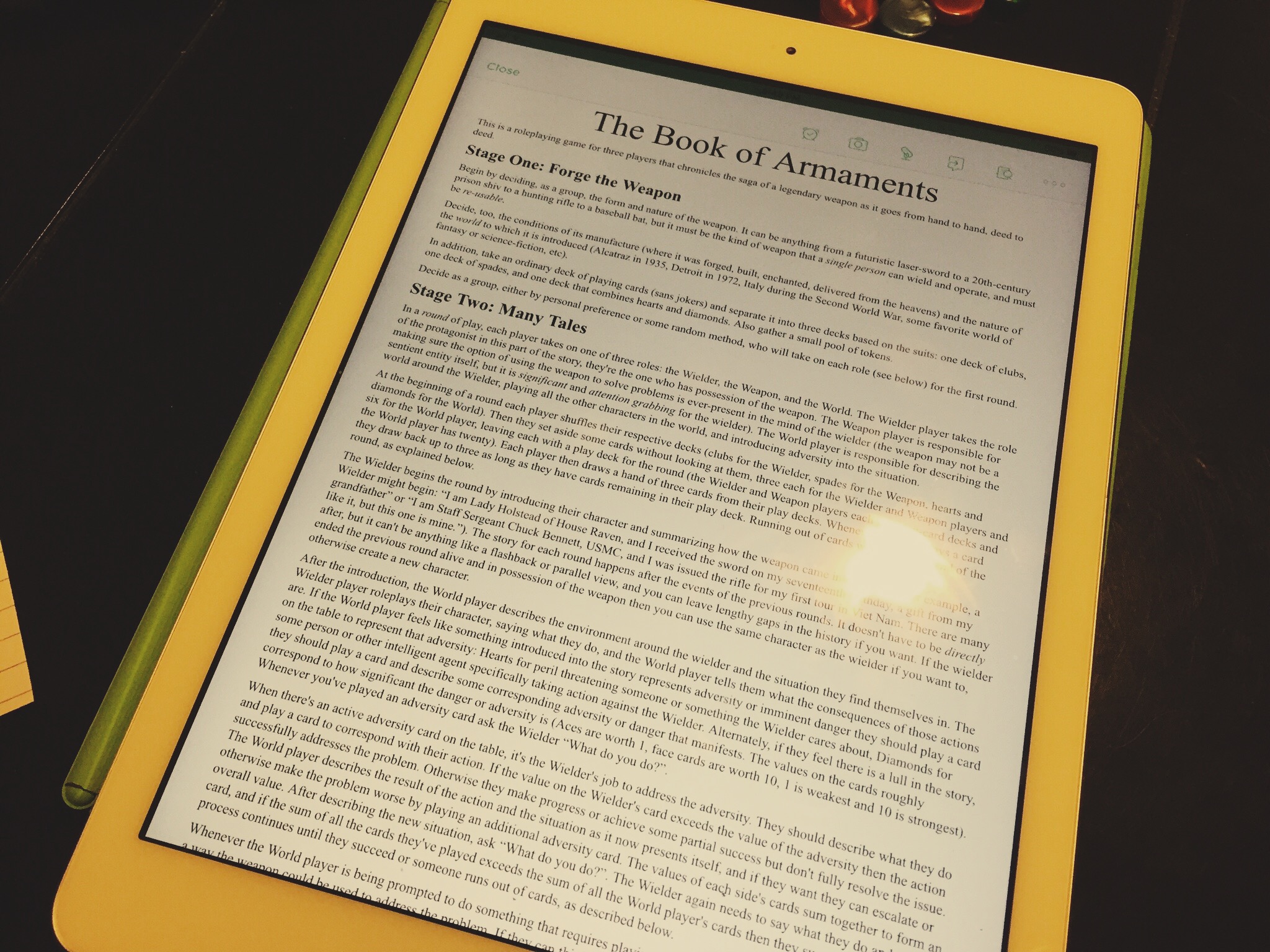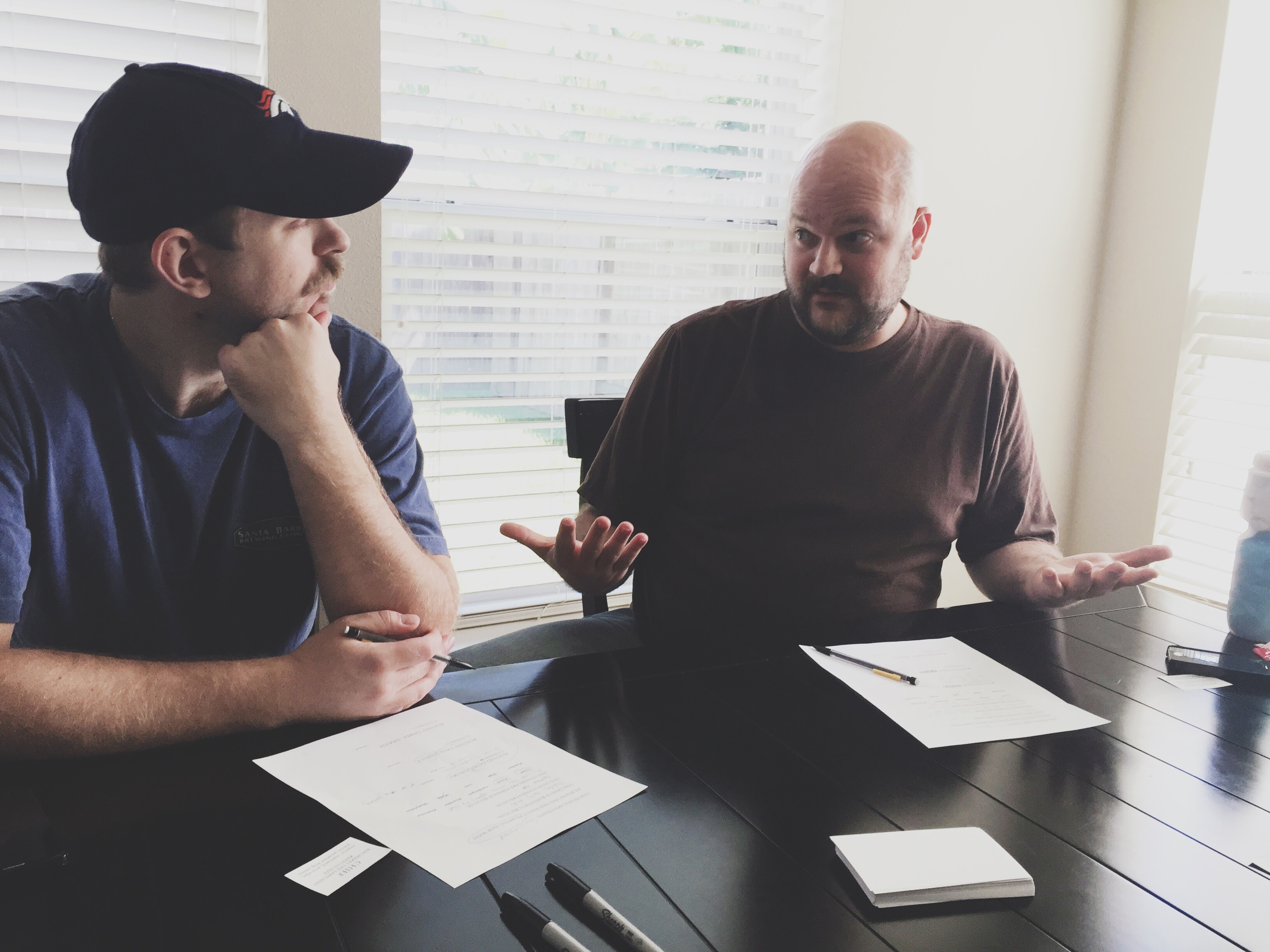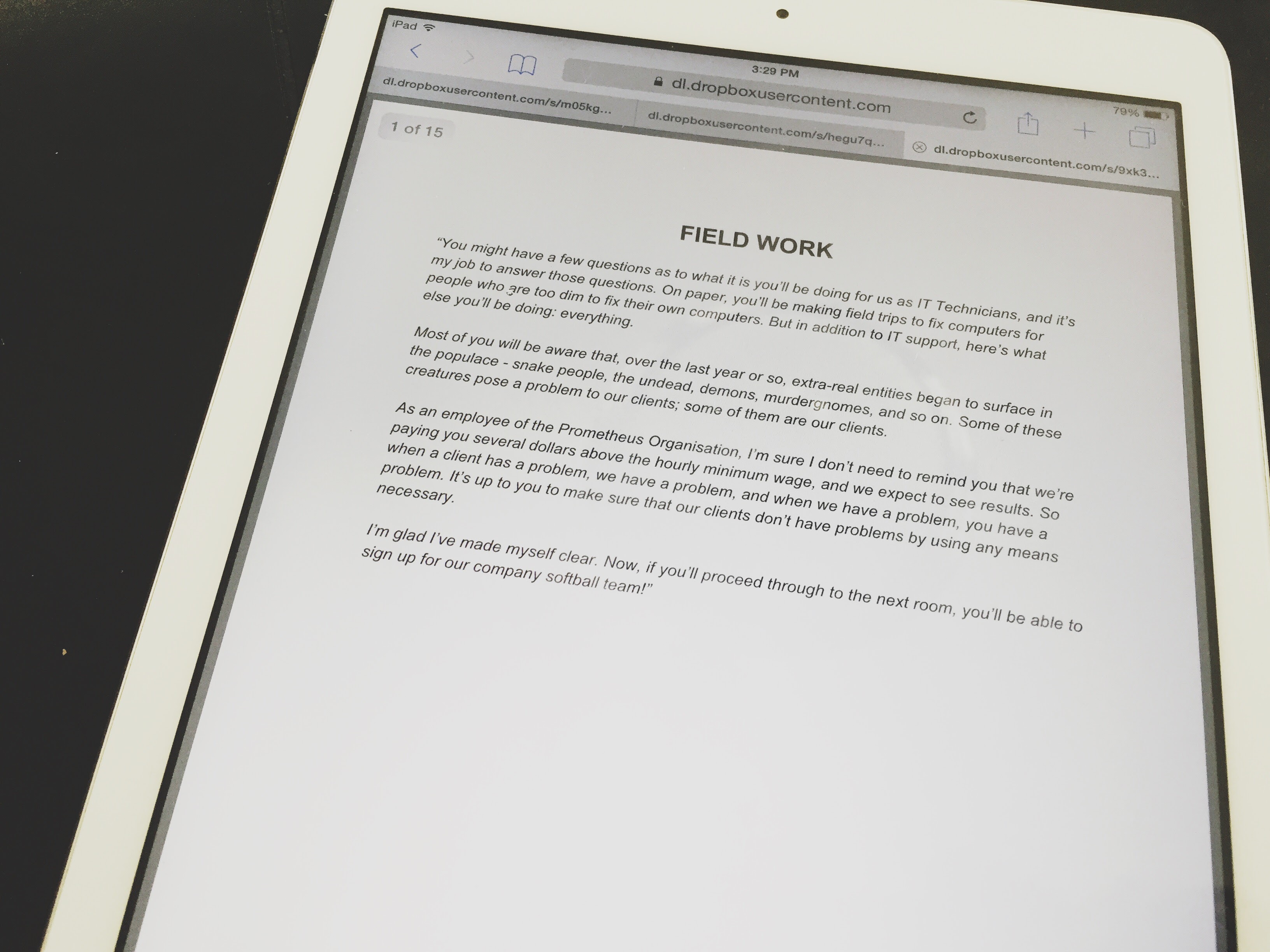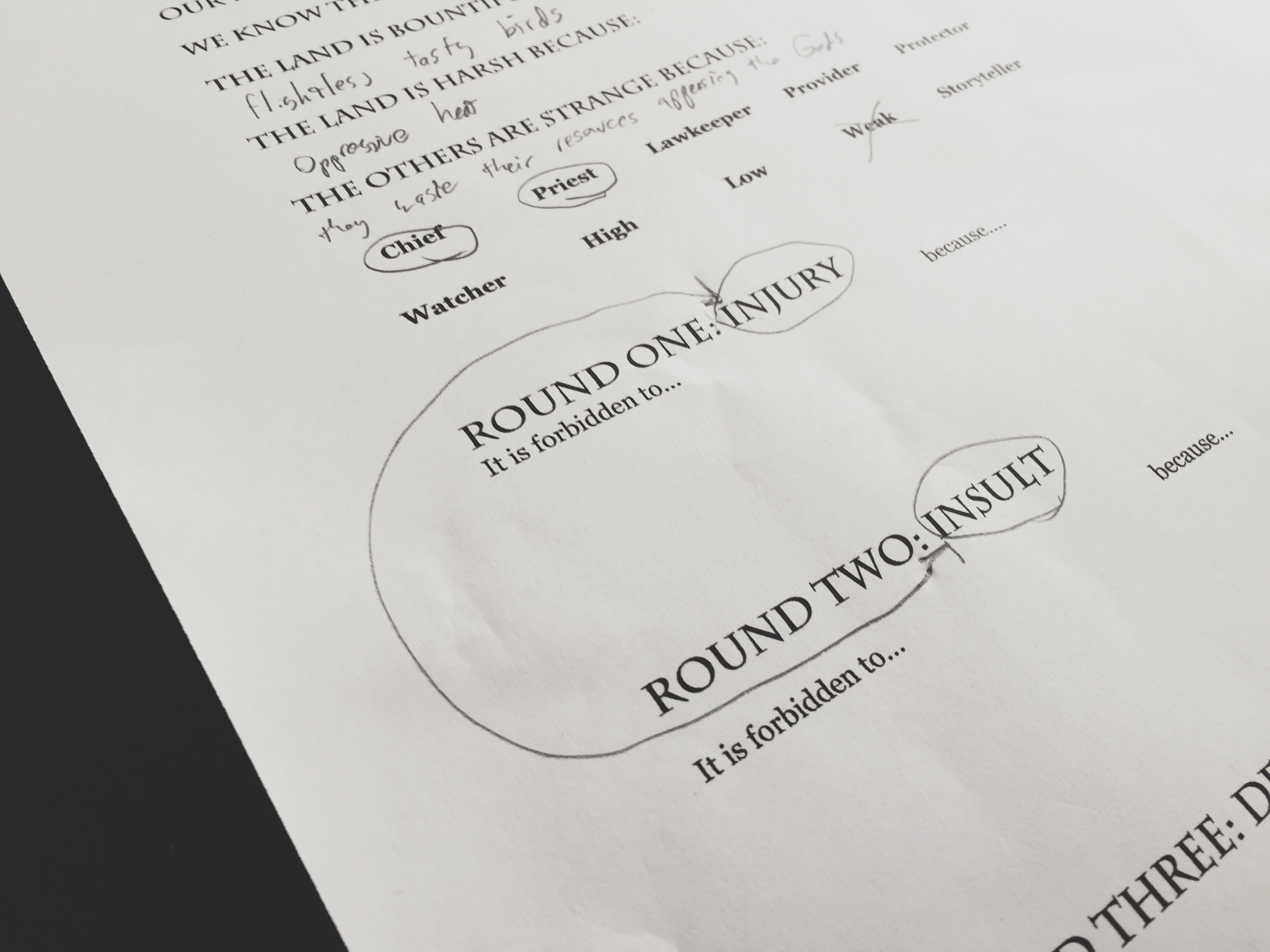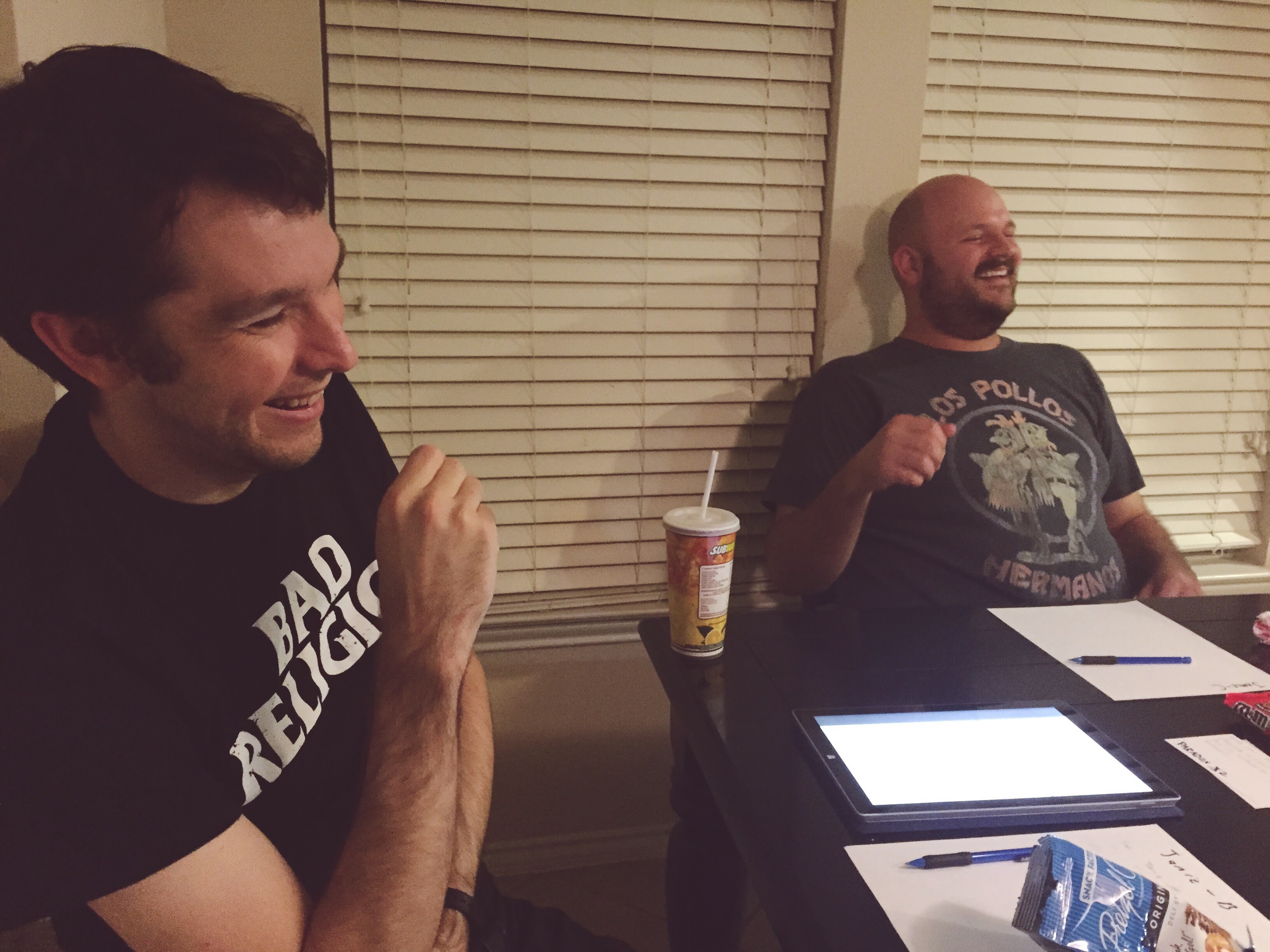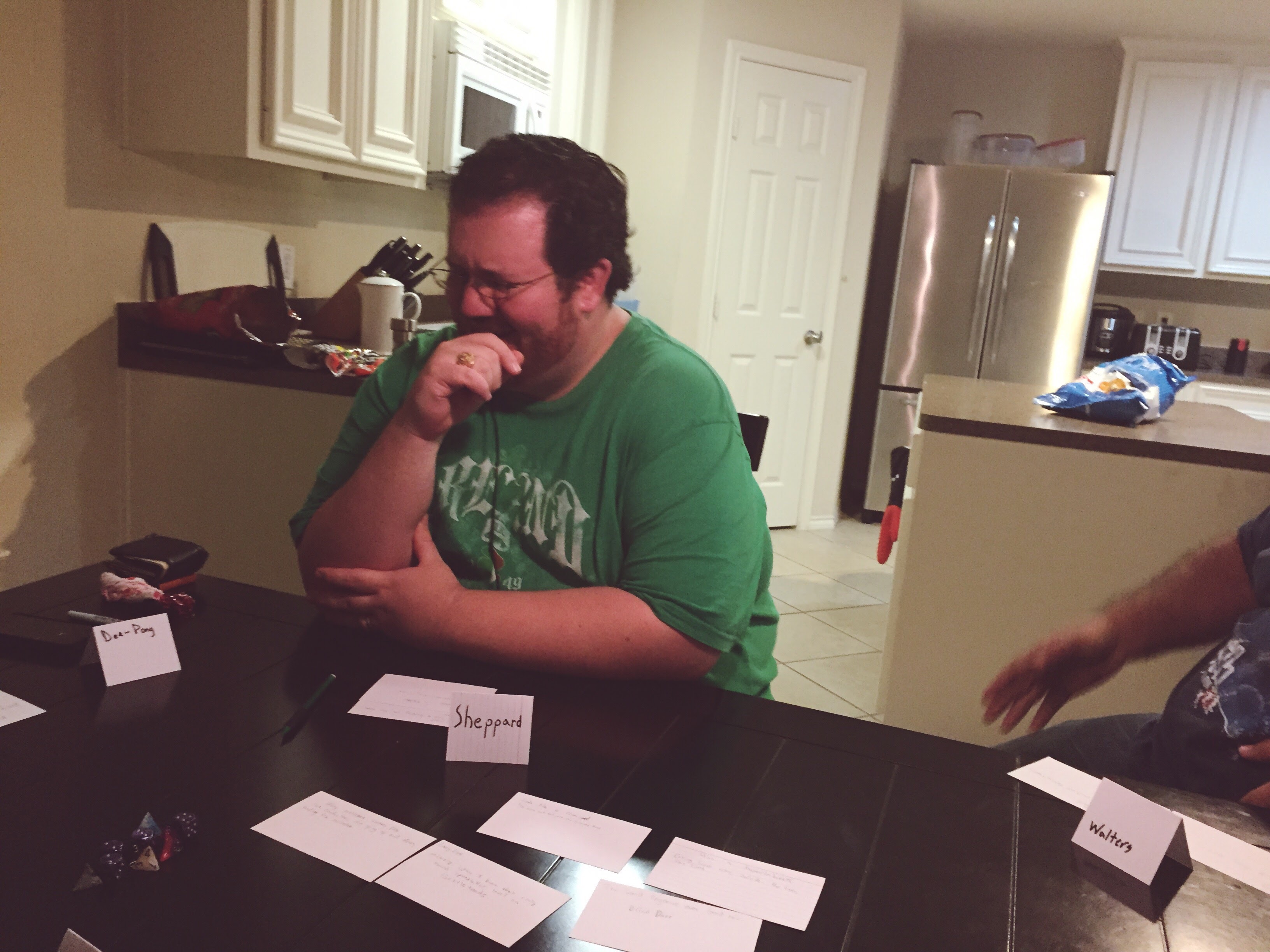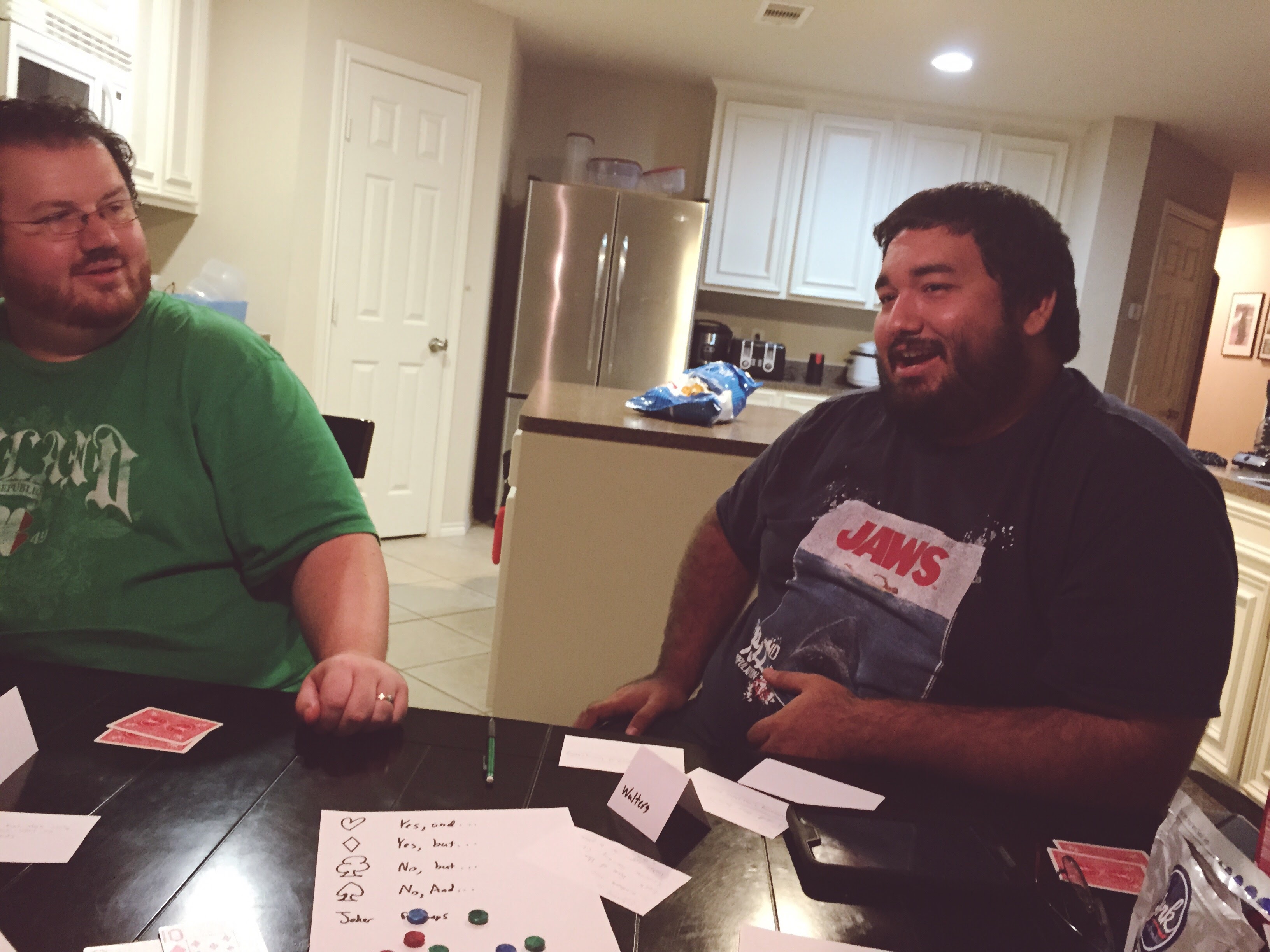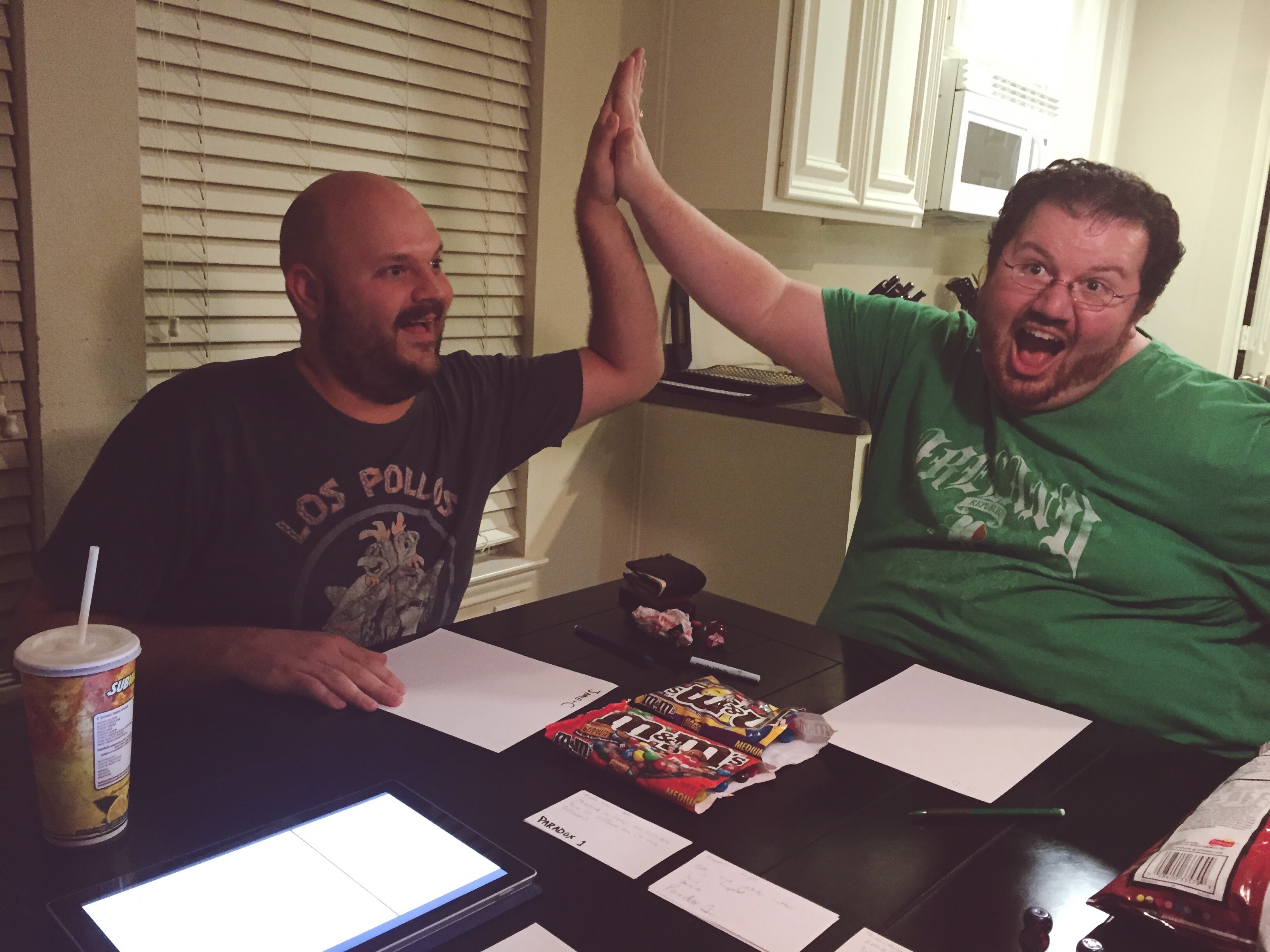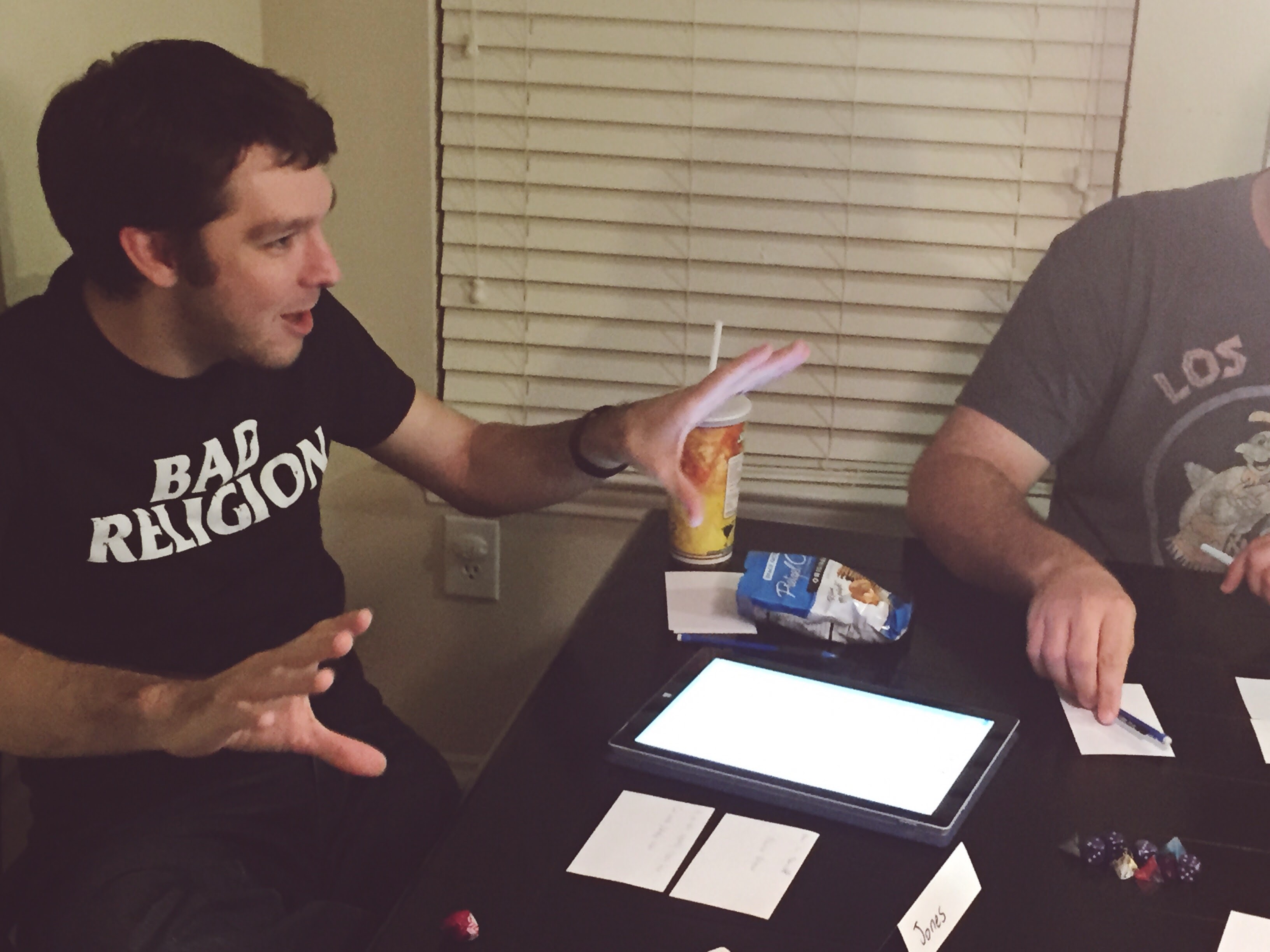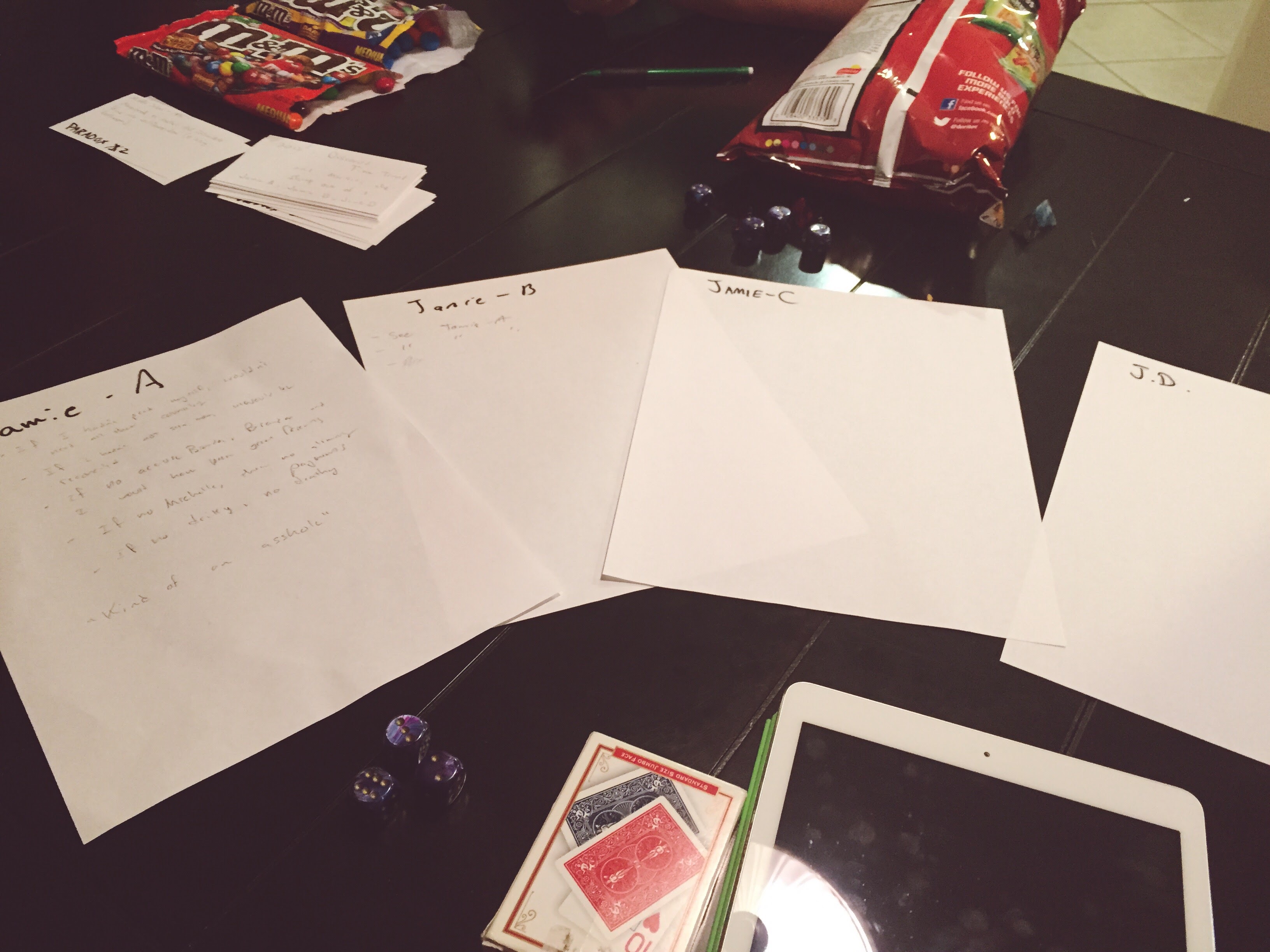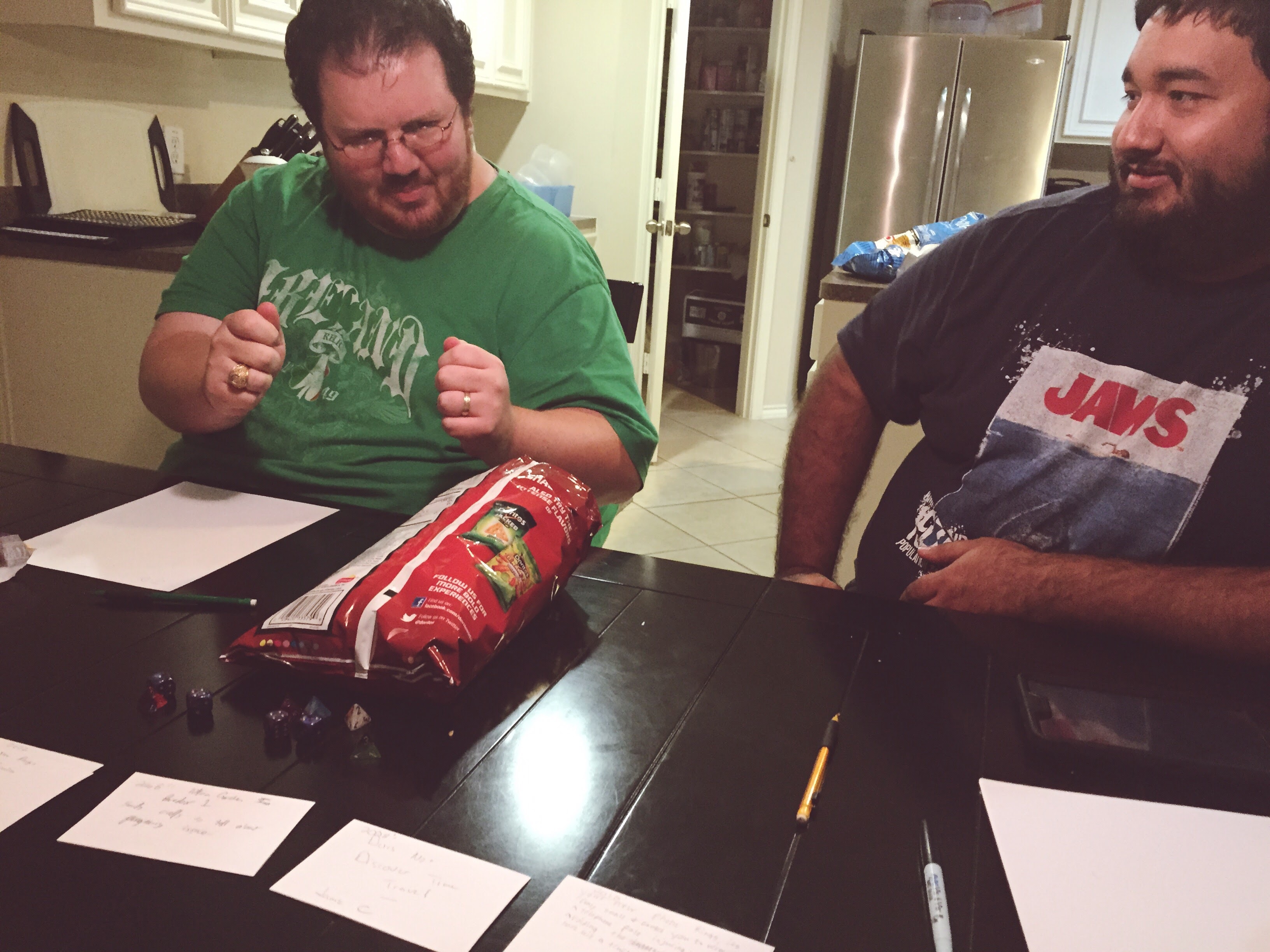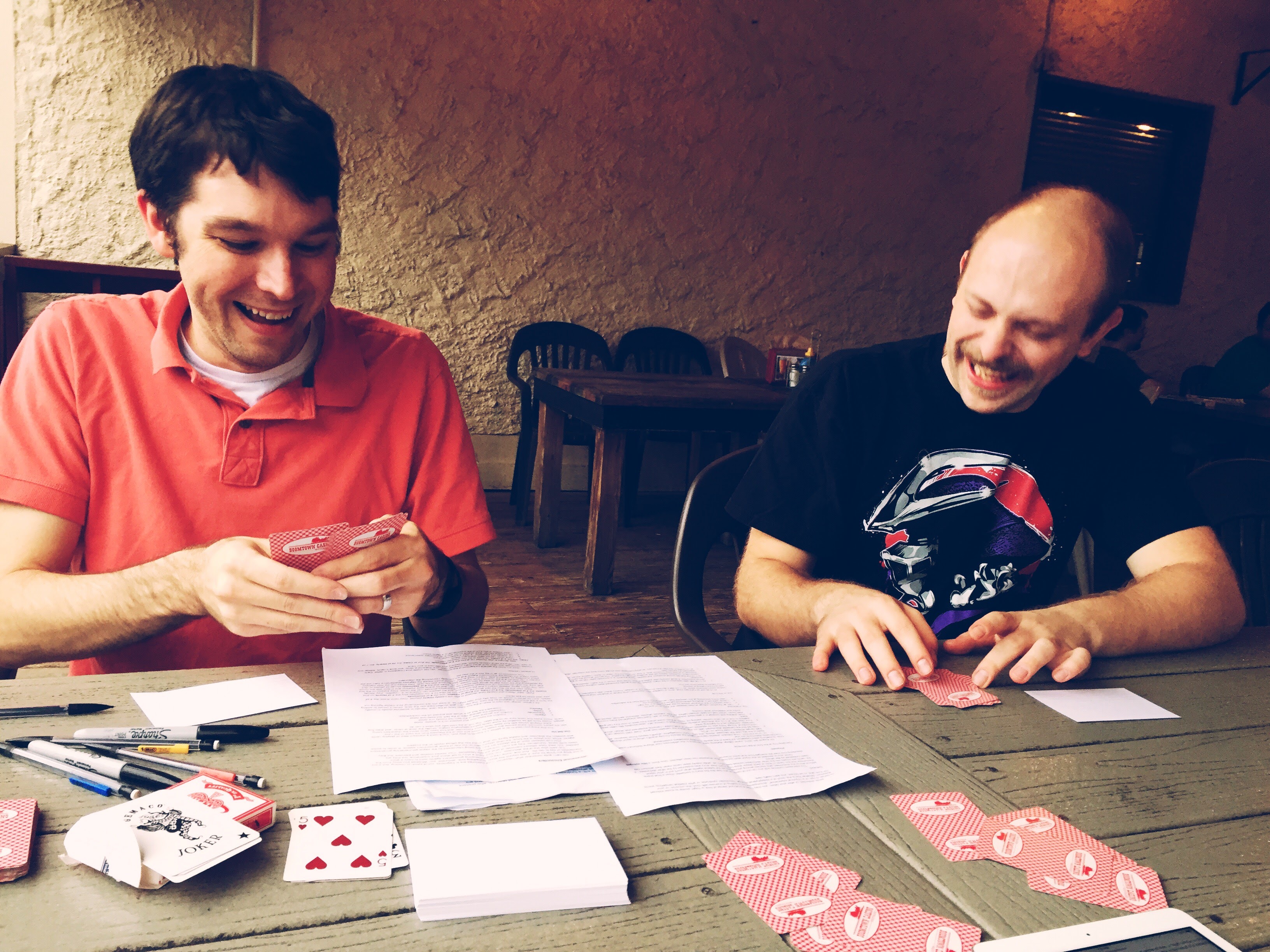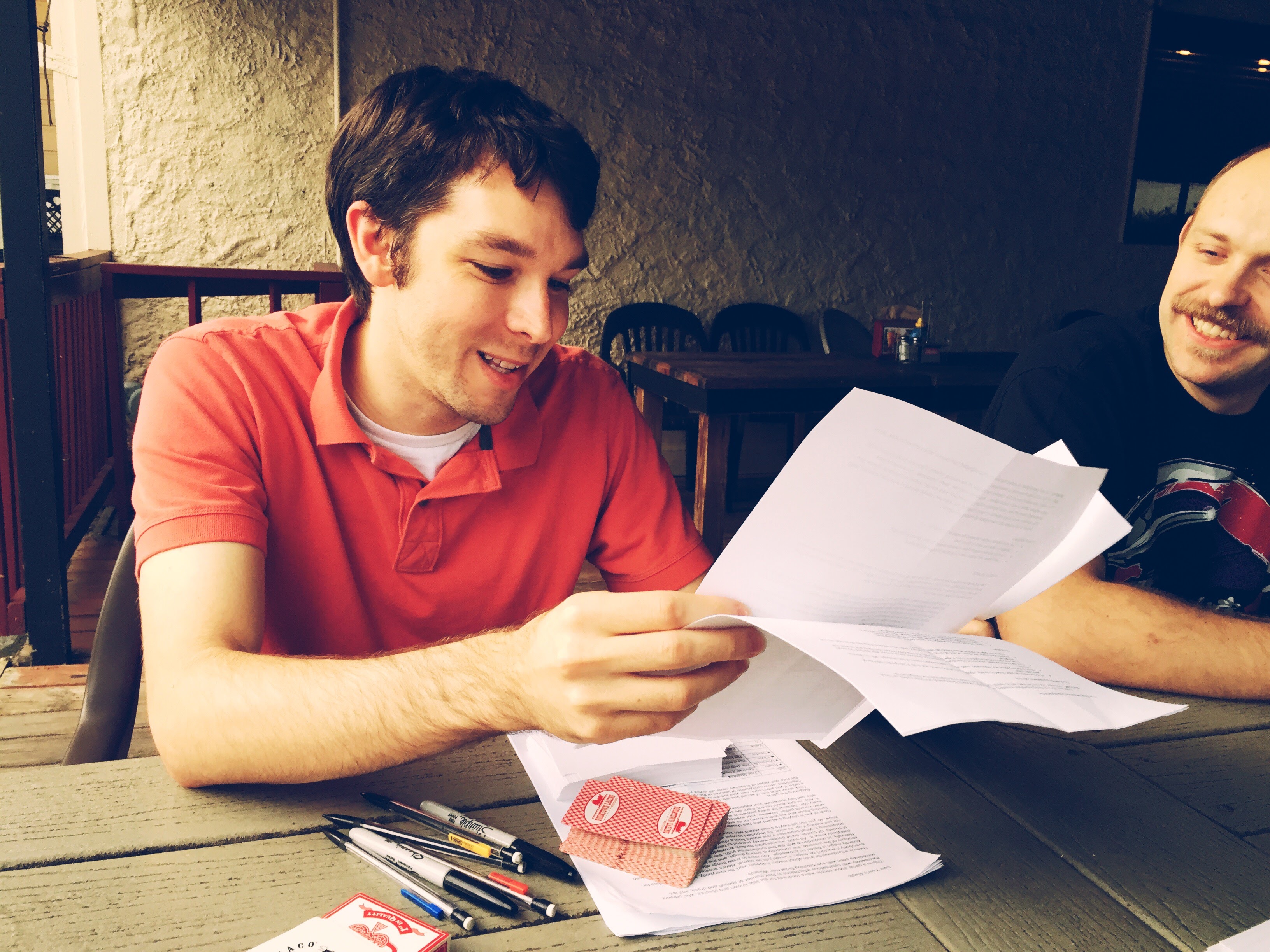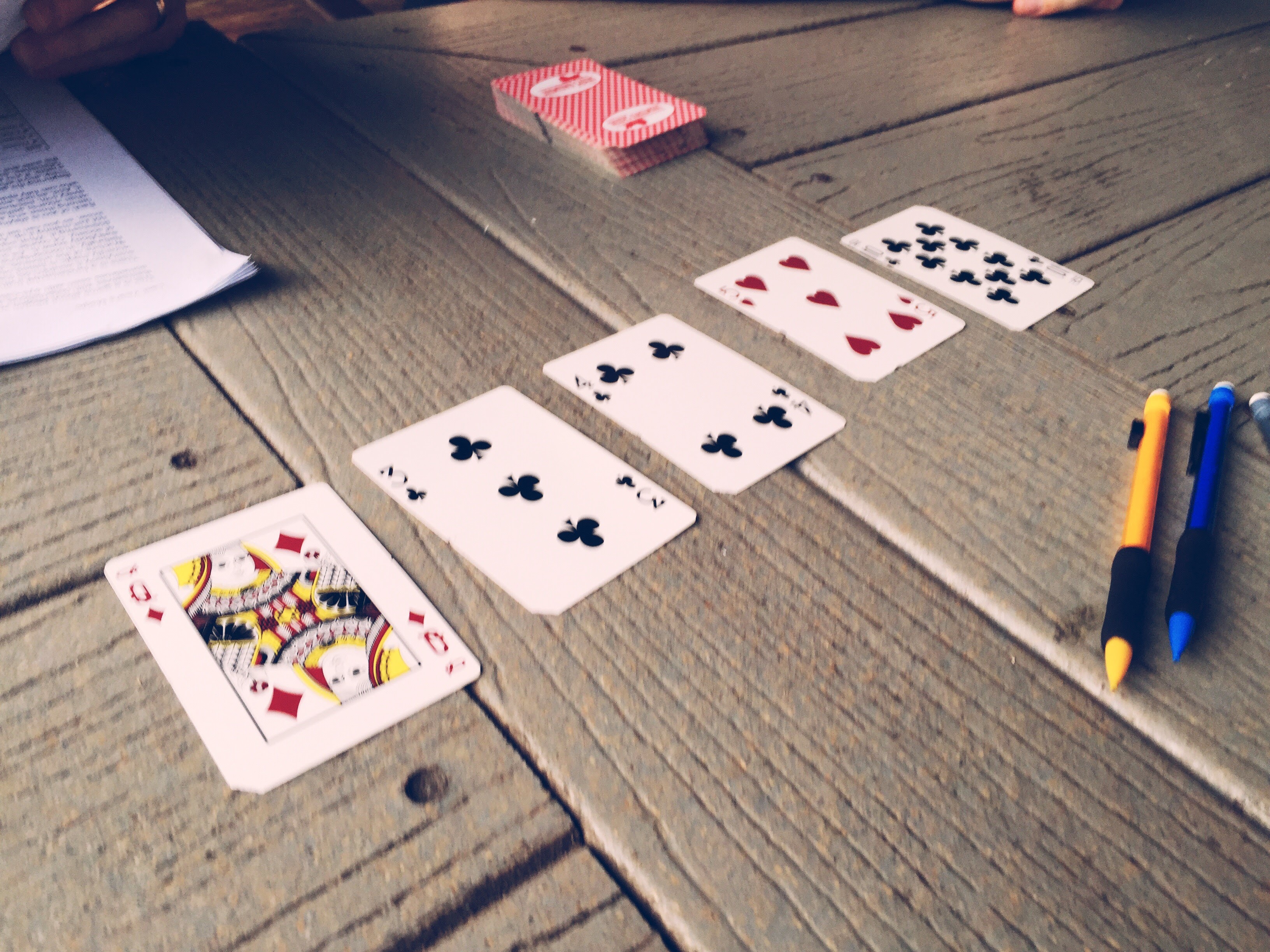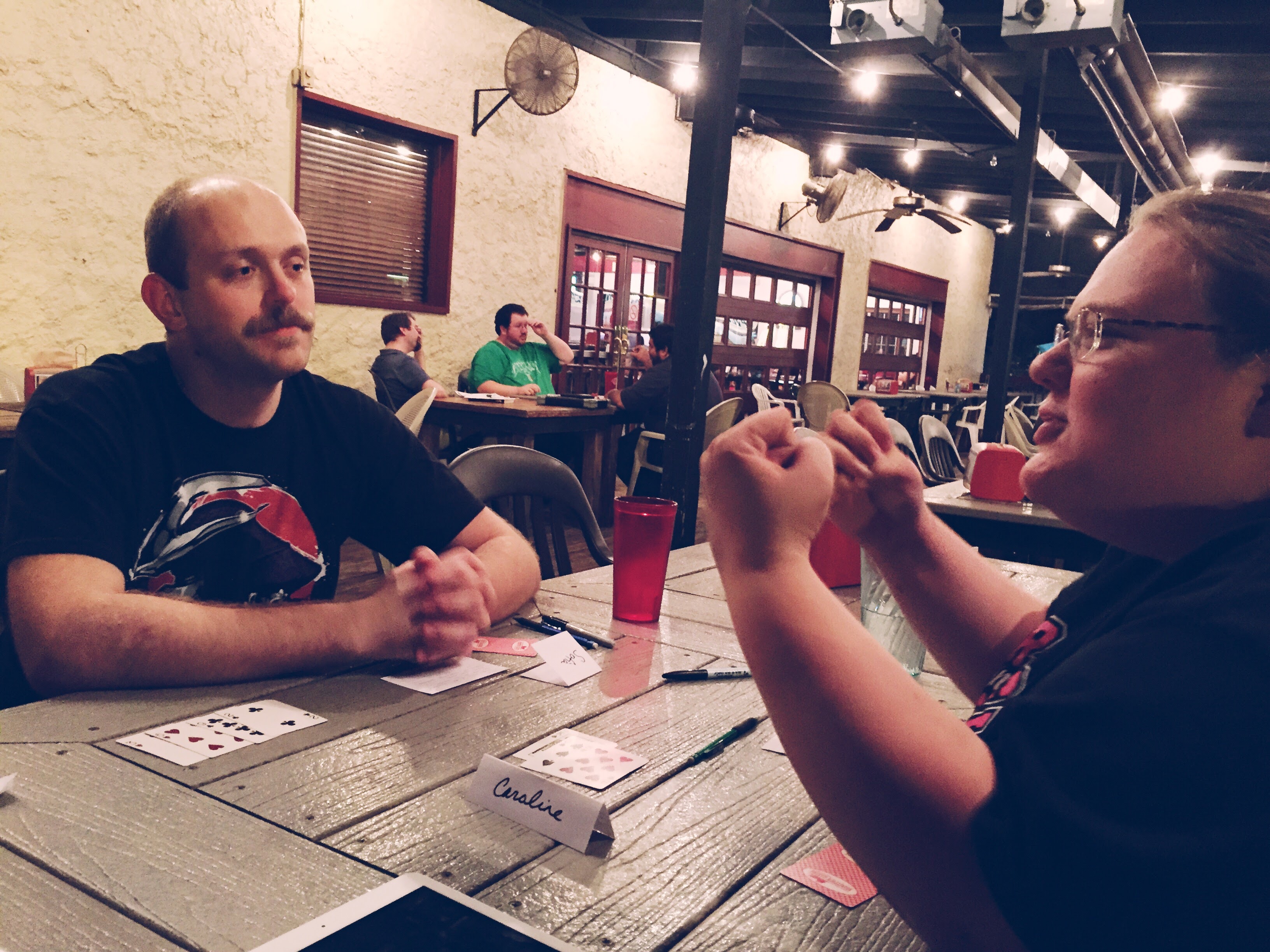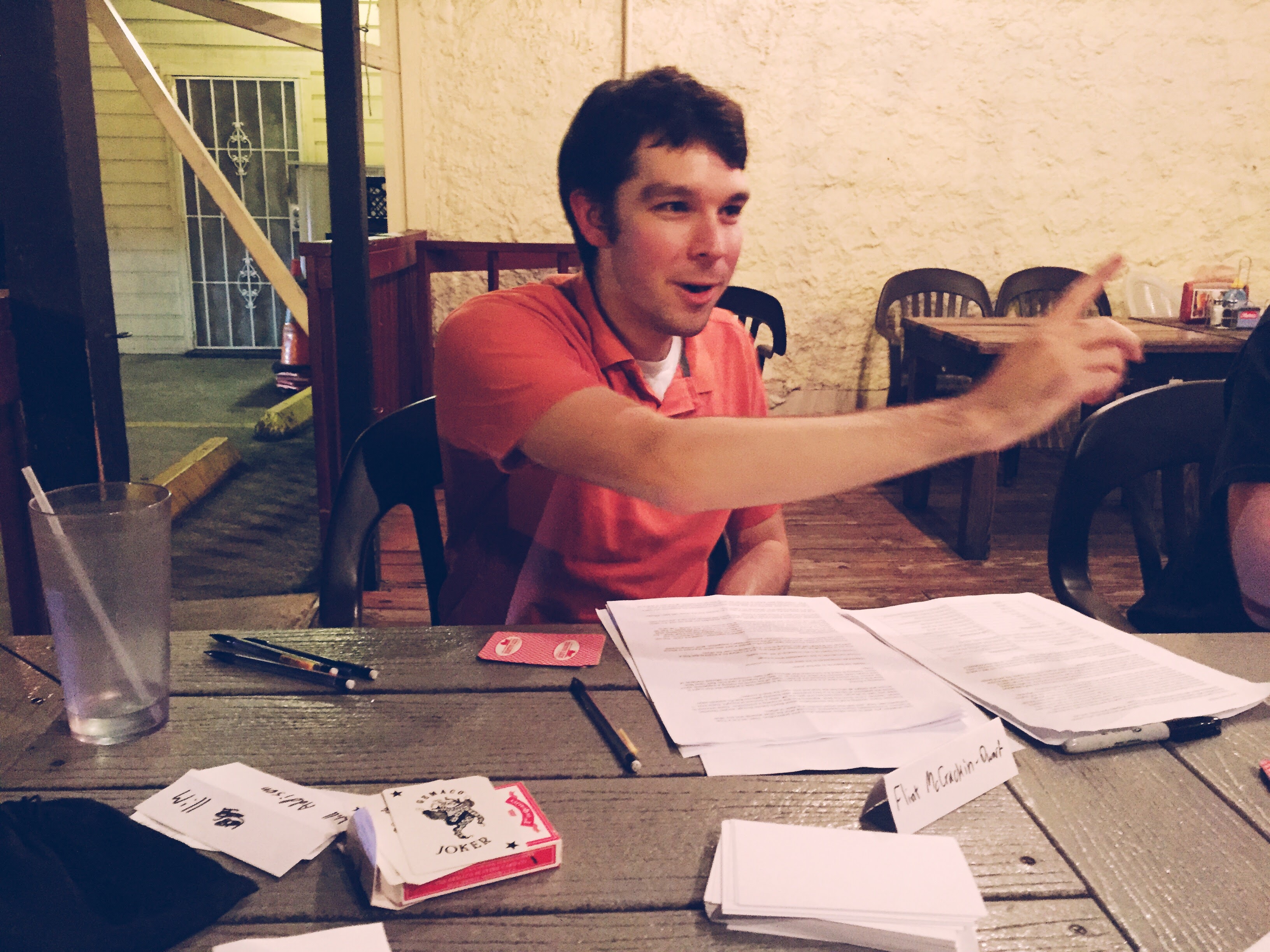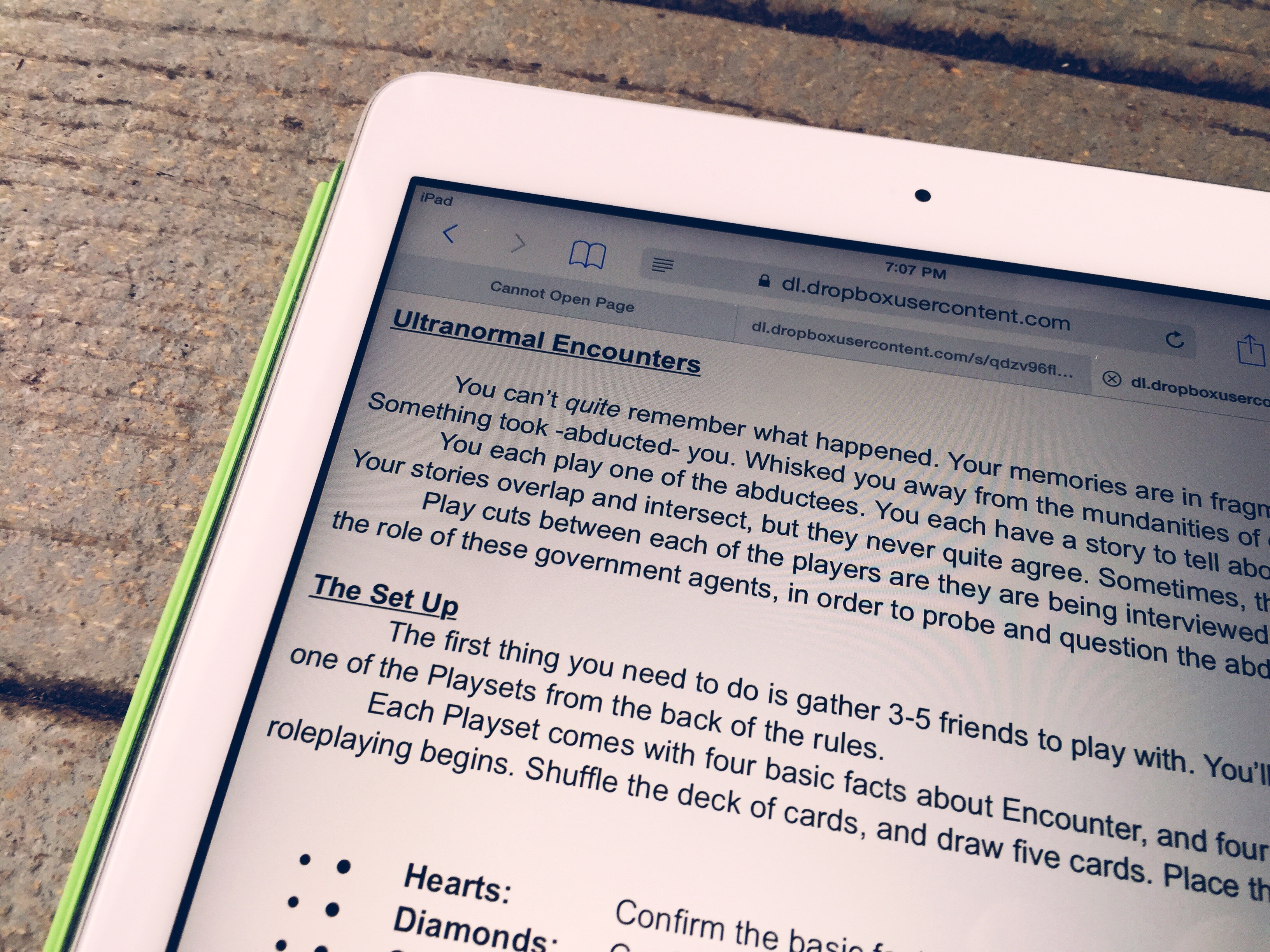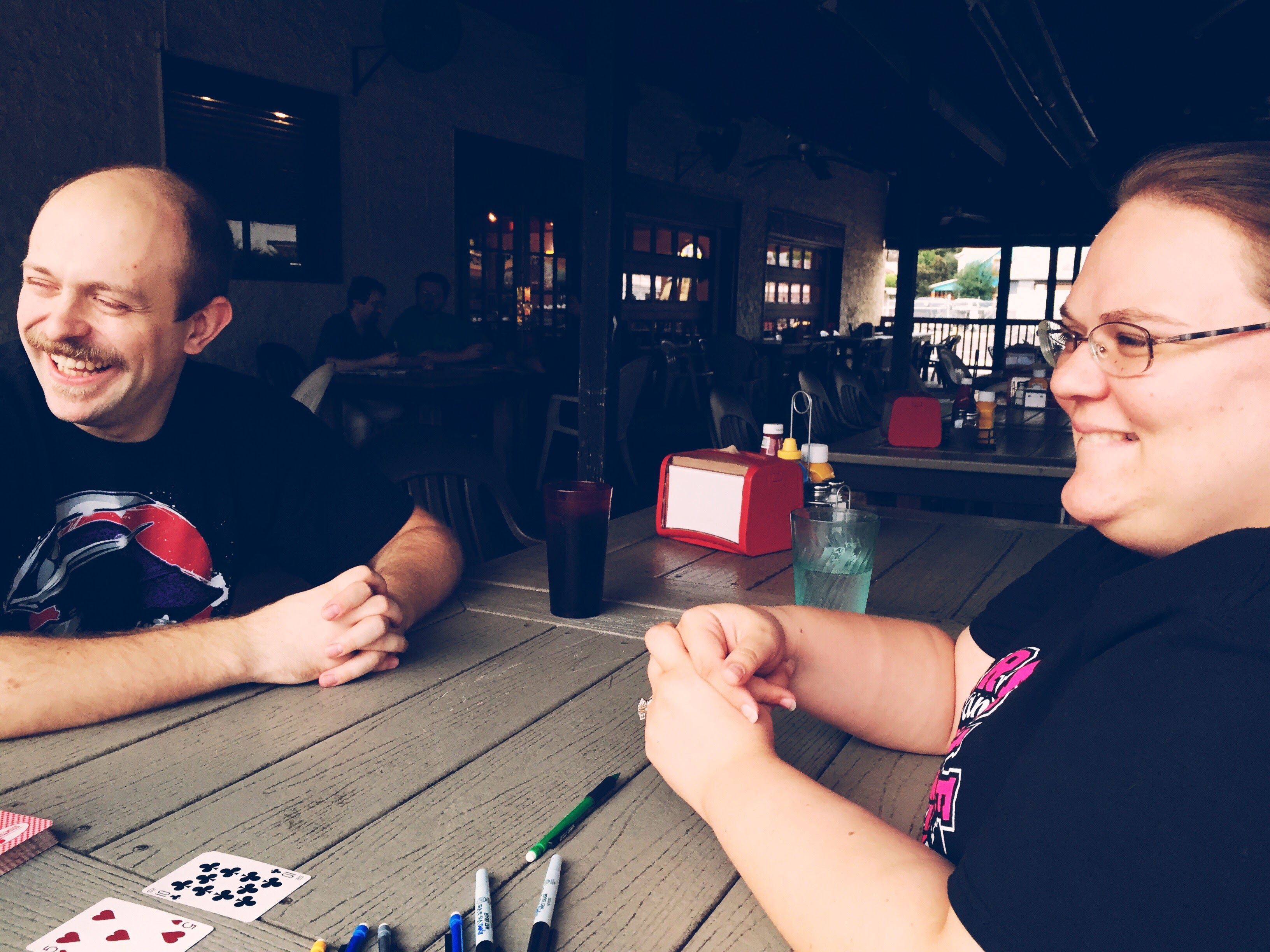On Friday, we played four more games from the #threeforged contest. My table did The Book of Armaments and my own Stage 2 game (only because we finished The Book of Armaments early and I wasn’t ready to run anything else). I’m not going to talk about my own game, but below are my thoughts on the other. Steve Mains will likely do a separate post for the games he ran.
The Book of Armaments
I liked it. The game is focused on a weapon, forged in a certain era, and its details are settled on before play. We chose to do a fantasy thing, but you can also do weapons for modern or historical settings. It’s a strictly three-player affair (despite the game’s advice on how to make it work for more than three), played out over several rounds. On a given turn, one player is the Wielder, one player is the Weapon, and one player is the World. The Wielder describes himself and how he came in possession of the weapon. The Weapon player’s job is to constantly advocate for when the weapon might be of use in a conflict. The Word player is basically the GM, and frames scenes for the Wielder. Each player has a deck of cards, and the idea is you use these cards to set the difficulty of challenges (World) or to overcome challenges (Wielder and Weapon). The Wielder’s cards are for when he uses means other than the weapon to get past the challenge. The Weapon cards are used if the Wielder accepts the Weapon player’s advice and uses the weapon to overcome it. The round ends when one of the players is out of cards, and whoever that was determines if the overall story arc for the Wielder was successful, and if the weapon passes to another character in history. The player roles shift and you begin anew, possibly with a new Wielder character. Rinse and repeat until you feel satisfied. There is also a competitive thing you do between rounds, which I will discuss below.
The game is fast-paced and fun. There are a couple of things in the rules that don’t quite work as intended, but they would be very easy fixes (and if the authors of the game are reading this, they should definitely get in touch for details). Our particular game got a little gonzo halfway through, but I think that’s because we went with a magic weapon, which allowed the Weapon players to get a little crazy with our armament’s capabilities. I think a game in a historical or modern setting would avoid that tendency, and I’d love to try it again in one of those modes. Overall, though, I was happy with the pace of the game and the ease with which we were able to tell these stories. I also liked how the stories changed between rounds, particularly when the sword passed to a new Wielder. It felt a little like In a Wicked Age in the way you get to see different slices of history focused around a core character (or, in this case, a weapon). In fact, I think the rules should be changed so that the Wielder character is always different between rounds. I’m not sure it would be as interesting to do two consecutive rounds with the same Wielder character.
The one big issue I had with the game is this inter-round competitive procedure in which each player makes a judgment about whether they think the round’s story saw the weapon having a greater impact on one of the following three things: the deeds done with the weapon, the soul of the Wielder, or the souls of those affected by the weapon. Each player has a different combination of two from which they can choose (which is an incredibly weird design decision; why can’t each player just choose from all three?). You make your choice and put a card representing it facedown in front of you. You reveal the cards and, depending on the combination of cards revealed, one of the three players gets a token. Whoever has the most tokens at the end of the game gets to decide the final fate of the weapon.
I understand this procedure is supposed to allow the players to reflect on the consequences of various choices made in the story, but I can’t overstate how flat this part of the game is. It added nothing to the proceedings, particularly because the distinctions between the three choices are so fuzzy. I think there is a more interesting way to get to the outcome the designers were aiming for. But, truly, you could remove this part entirely and the game wouldn’t be missing a thing. You’d just have to come up with an alternate method of deciding the weapon’s final fate.
All in all, though, I liked this one a lot. It’s definitely one of my favorites from the contest.

